Redevelopment of Oolong Tea and Green Tea Component Analysis Reference Materials
-
摘要:
20世纪80年代至今,中国已研制了9种茶叶成分标准物质。中国地质调查局于2004年下达中国地质科学院地球物理地球化学勘查研究所研制的一套适用于覆盖区农业生态地球化学评价的生物地球化学系列标准物质,其中包括两种茶叶标准物质,定值组分60余项,包括植物营养元素、有毒、有害元素和重金属污染元素以及人们关心的一些微量营养元素等,满足了相关食品卫生安全及生物样品成分检验分析的需要,取得了显著的社会效益。随着农业生态地质调查工作全面部署和展开,对生物样品的分析测试任务加大,对相应地球化学标准物质的需求也随之增加。本文复制了GBW10016a和GBW10052a两种茶叶标准物质,候选物分别为福建武夷山乌龙茶和江西上饶市婺源绿茶。研制过程严格按照JJG 1006—1994、JJF 1343—2012和JJF1646—2017等相关规范要求,侯选物经粗碎、干燥、细碎、过筛、混匀等步骤制备而成,经统计学检验,样品均匀,稳定性良好,定值采用多家实验室合作定值的方式进行,优选国内技术实力较强、仪器设备先进、且有相关标准物质定值测试经验的11家实验室,采用电感耦合等离子体质谱/发射光谱法(ICP-MS/OES)、原子荧光光谱法(AFS)等准确可靠的方法共分析61项指标。GBW10016a最终给出认定值54项,参考值3项;GBW10052a定值57项,参考值3项。本次研制的茶叶标准物质定值成分多样、量值准确可靠,符合国家一级标准物质的要求。与原批次标准物质相比,GBW10016a定值指标增加了Ag和Sn,Ge和Tl由原批次的参考值升级为标准值;GBW10052a增加了Al、Ag、Cl、I、N、S、Sb、Sc、Si及Sn由原批次的参考值升级为标准值。本次复研制的标准物质,在同类型中占据重要地位,研制过程严格按照相关规范执行,测试方法经典可靠,定值结果准确度高,于2019年被审批为国家一级标准物质,能够有效支撑农业生态环境地球化学调查与评价、生物样品的分析及食品与农产品分析测试的需要。
-
关键词:
- 茶叶 /
- 标准物质 /
- 定值元素 /
- 电感耦合等离子体质谱/发射光谱法 /
- 质量控制
要点(1) 样品定值多样, 量值准确, 符合国家一级标准物质要求。
(2) 研制的2种茶叶标准物质GBW10016a给出认定值54项, 参考值3项; GBW10052a定值57项, 参考值3项。
(3) 与原标准物质相比, 不确定度范围缩小, 定值指标增加Ag、Sn、Al, 且Ge、Tl、Cl等11种指标由参考值升级为标准值。
HIGHLIGHTS(1) The certified values are diverse and accurate, meeting the requirements of the national first-class reference materials.
(2) Of two tea reference materials, GBW10016a gave 54 certified values and 3 reference values; GBW10052a gave 57 certified values and 3 reference values.
(3) Compared with the original reference materials, the range of uncertainty is reduced. Eleven elements such as Ag, Sn, Al. Ge, Tl, and Cl have been upgraded from reference values to certified values.
Abstract:BACKGROUNDWith the comprehensive development of the agricultural ecological geological survey and the improvement of people's attention to the ecological environment in our country, the demand for biogeochemical reference materials in biological analysis food analysis and agricultural products analysis is increasing. The existing biogeochemical reference materials are in short supply, and there is an urgent need to develop new reference materials. With the full deployment and development of agro-ecological geological surveys, the demand for biogeochemical reference materials is increasing.
OBJECTIVESTo reproduce tea composition reference materials (GBW10016a & GBW10052a) to take the place of old tea composition reference materials (GBW10016 & GBW10052).
METHODSAccording to the development needs of geological surveys, the focus of this paper is on the preparation of two tea reference materials, GBW10016a and GBW10052a. The progress includes sampling, processing and preparation, particle size test, uniformity test, stability test, content test, and calculation of identification value and uncertainty.
In the sampling process, the sample collection locations are Wuyishan City, Fujian Province and Wuyuan County, Shangrao City, Jiangxi Province. The candidates are oolong tea and green tea. The tea samples both weigh 400kg.
In the processing and preparation, the samples were cleaned, freeze-dried, heated and dried, ball milled, screened, sub-packed and inactivated. In the particle size test, the BT-9000s laser particle size distributor was used to test the particle size of the samples. The particle size of GBW10016a & GBW10052a centrally distributed in the range of 75μm to 200μm, and the cumulative distribution content reached 98% in the range of 175μm to 200μm.
In the uniformity testing process, 15 bottles of samples were randomly selected for analysis of more than 30 elements. The analysis results show that the relative standard deviation of the elements is less than 7%, the measured values F in the variance test are less than the critical value F. It shows that the uniformity of the samples is acceptable.
In the stability testing process, the short-term and long- term stability of the samples are good according to the analysis and testing in different time periods.
In the content testing process, a total of 61 indicators were analyzed by accurate and reliable methods such as inductively coupled plasma-mass spectrometry/optical emission spectrometry (ICP-MS/OES) and atomic fluorescence spectrometry (AFS) in multiple laboratories.
In the process of calculation of identification value and uncertainty, the Grubbs algorithm and the Dixon algorithm were carried out to check and exclude individual out-group data in the group at the first step. The Cochrane algorithm was used to carry out precision testing at the second step. The Shapiro-Wilk algorithm was used to complete the data normality test.
The whole preparation process of the tea reference materials follow three specifications: Technical Norm of Primary Reference Materials (JJG 1006—1994), General and Statistical Principles for Characterization of Reference Materials (JJF 1343—2012) and The Production of Reference Materials for Geoanalysis(JJF 1646—2017).
RESULTSGBW10016a (GSB-7a) and GBW10052a (GSB-30a) tea reference materials are successfully reproduced, and have been approved as national first-class reference materials. The GBW10016a (GSB-7a) and GBW10052a (GSB-30a) are characterized by strong representativeness, multi-component planting, and accurate and reliable customization results. A total of 61 indicators are involved in this reproduction: Ag, Al, As, B, Ba, Be, Bi, Br, Ca, Cd, Ce, Cl, Co, Cr, Cs, Cu, Dy, Er, Eu, F, Fe, Gd, Ge, Hf, Hg, Ho, I, K, La, Li, Lu, Mg, Mn, Mo, N, Na, Nb, Nd, Ni, P, Pb, Pr, Rb, S, Sb, Sc, Se, Si, Sm, Sn, Sr, Tb, Th, Ti, Tl, Tm, U, V, Y, Yb, Zn. GBW10016a (GSB-7a) contains 54 elements with certified values and uncertainties, and 3 elements with reference values. GBW10052a (GSB-30a) contains 57 elements with certified values and uncertainties, and 3 elements with reference values. For GBW10016a (GSB-7a), Ag and Sn are added, and Ge and Tl are upgraded from the reference values of the original batch (GBW10016) to the certified values. For GBW10052a, Al, Ag, Cl, I, N, S, Sb, Sc, Si and Sn are upgraded from the reference values of the original batch (GBW10052) to the certified values. Due to the current level of analysis technology and objective conditions, the elements of Hf and Nb cannot be given reference values.
CONCLUSIONSThe reference materials effectively support the needs of geochemical investigation and evaluation of the agricultural ecological environment, analysis of biological samples and food and agricultural products. With the development of ecological environmental research and food safety and hygiene inspection, people pay more and more attention to the characteristic elements, and the requirements are increasing. Problems still exists in the analysis of biological samples, such as discrete analysis results of the same method between laboratories and systematic errors among the main analysis methods of individual elements. There are technical difficulties in the analysis of some elements. Analysis and testing technology needs to be continuously improved to cope with the characteristics of a special biological sample matrix, low composition content and difficult testing.
-
花岗质岩岩石是地球大陆地壳有别于其他行星的重要标志,且与大量的岩浆-热液矿床在时空和成因上密切相关[1-3],有关花岗质岩石的形成与演化一直是地质学者研究的热点。花岗质岩石主要矿物组成比较简单,一般由长石、云母和石英组成,但有关其岩石起源与演化一系列问题一直存在激烈的争议。绝大多数情况下,人们大多借助元素和同位素地球化学来限定花岗质岩石成因,如以往常采用全岩的Sr、Nd、Pb等放射成因同位素来进行示踪,遗憾的是这些同位素在很多情况下难以对花岗质岩浆的形成与演化提供明确的制约[4-5]。这是因为全岩同位素示踪存在三个方面的局限性:①岩浆在侵位过程当中如果发生了多次岩浆改造(Modification),如岩浆混合、围岩同化混染和结晶分异等,Sr-Nd同位素测定值代表的是均一化后某一个时间点(snapshot)的信息,无疑会隐藏许多岩浆来源的信息[6];②全岩放射成因同位素能够较合理地监测到古老地壳和软流圈地幔物质,但很难监测到年轻物质的具体混入量,因为后者的放射成因子体同位素难以准确测量,而且年轻的幔源岩石或者岛弧火山岩在参与花岗岩形成之前如果遭受热液蚀变,Sr同位素只有少量变化,而Nd和Pb同位素没有变化[4],故难以准确地判断其源岩性质;③使用全岩放射成因同位素分析问题时,我们通常假定岩石中各矿物相具有相同的来源并且保持同位素平衡,但近年来人们发现一些矿物与其寄主岩石在同位素组成上可以存在很大差别[7]。因此,仅借助全岩放射成因同位素来示踪岩浆来源,许多详细的岩浆来源信息及源岩性质变化细节不能被有效地揭露出来,况且与成矿有关的花岗质岩石常普遍遭受不同程度的热液蚀变,这就给用全岩化学成分限定岩浆起源与形成过程带来了更大难度。
为了攻克这个难题,越来越多的研究者试图利用花岗岩中矿物的元素和同位素来揭示岩石成因和演化过程,但由于侵入岩缓慢的冷却过程,亚固相线下大部分矿物的化学成分得到重新平衡,许多详细的岩石成因信息已经丢失[8]。而副矿物具有难熔、惰性和化学性质稳定等特征,一般不易受后期热事件的影响[8-9],即使在特定的条件下发生改变,也能通过结构及成分有效地辨别出来[10-12]。同时,副矿物中含有岩石中大部分高场强元素和稀土元素,这些元素和相关同位素在副矿物中扩散速率缓慢,其结晶过程随着岩浆物理化学条件的改变而表现出不同的结构与地球化学特征,甚至能保存元素和同位素环带,被视为岩浆来源和演化过程的监测器,最大限度地保留了岩浆来源与演化过程的地球化学指纹[12-13]。近年来,随着激光剥蚀电感耦合等离子体质谱(LA-ICP-MS)和激光剥蚀多接收等离子体质谱(LA-MC-ICP-MS)等微区原位分析技术的快速发展和日趋成熟,使得对副矿物进行原位成分测定、获得高精度微量元素和同位素组成得以实现,极大地促进了副矿物在岩石成因中的应用[13-14]。如Bruand等[13]通过对副矿物锆石、磷灰石和榍石进行了原位氧同位素分析,识别出古老花岗岩受后期变质作用的影响,而全岩分析无法揭示出来。越来越多的研究表明,副矿物榍石[CaTi(SiO4)O]微区原位元素和Nd同位素组成,也能够详细揭示岩浆来源和岩浆变化的细节,可显著提高岩浆作用过程的空间分辨率,是探讨岩浆来源与岩石成因的新的有效手段,避免了利用全岩分析为我们探讨花岗岩类成因带来的困扰[15-17, 14]。
湘南构造岩浆带是华南地区花岗质岩浆活动的重要组成部分,发育有多个高钾钙碱性花岗闪长质小岩体,如水口山、宝山和铜山岭等,这些闪长质小岩体主要形成于155~160Ma[18-19],在时空和成因上与铜铅锌多金属成矿密切相关,普遍遭受了不同程度的热液蚀变作用[19-21]。以往基于全岩元素和Sr-Nd-Pb同位素分析,先后提出壳-幔混合成因、残留体再造及中下地壳脱水熔融等多种不同成因模型[22-23],有关这些花岗闪长质岩体的源区特征及岩浆性质一直存在非常大的争议。本文以铜山岭岩体为对象,在详细的野外和镜下观察基础上,采用电子探针(EPMA)、激光剥蚀等离子体质谱(LA-ICP-MS)技术对暗色包体和花岗闪长岩两种岩石类型中榍石的主量、微量元素进行原位分析,采用激光剥蚀多接收等离子体质谱(LA-MC-ICP-MS)技术分析两类样品中榍石的原位Nd同位素组成,准确限定花岗闪长质岩石形成的源区特征和岩浆物理化学性质,为深入理解该地区花岗闪长质岩石成因及其大规模铜铅锌多金属成矿机制提供重要支撑。
1. 地质背景
湘南位于华夏地块和扬子地块的结合部位,其东为华夏地块,西为扬子地块,是一个极富特色的铜铅锌多金属成矿密集区(图 1a)[24-25]。该地区主要出露的地层为古生界灰岩、碎屑岩[26]。岩浆作用强烈,花岗闪长质小岩体成带状密集分布,区域上自北向南分布的水口山、宝山、铜山岭是该地区铜铅锌多金属成矿有关的花岗闪长质小岩体的典型代表。
![]() 图 1 (a)湘南地区地质简图和(b)铜山岭岩体分布图(据文献Wang等[24]和卢友月等[25]修改)。湘东南的花岗闪长质侵入体位于华夏和扬子地块的结合部位,铜山岭岩体位于湘东南的南部,由Ⅰ、Ⅱ、Ⅲ等3个小岩体组成,本次研究的样品采自Ⅰ号岩体Figure 1. (a)The simplified geological map of southern Hunan Province and (b) the distribution of the Tongshanling granitic pluton (modified from Wang, et al.[24] and Lu, et al.[25]). Granodioritic pluton in southeast Hunan Province (South China) emplaced at the junction between Cathaysia and Yangtze bocks. The Tongshanling pluton is located in the south of southeast Hunan Province, and is composed of three small plutons Ⅰ, Ⅱ and Ⅲ. The studied samples were collected from No.Ⅰ pluton.
图 1 (a)湘南地区地质简图和(b)铜山岭岩体分布图(据文献Wang等[24]和卢友月等[25]修改)。湘东南的花岗闪长质侵入体位于华夏和扬子地块的结合部位,铜山岭岩体位于湘东南的南部,由Ⅰ、Ⅱ、Ⅲ等3个小岩体组成,本次研究的样品采自Ⅰ号岩体Figure 1. (a)The simplified geological map of southern Hunan Province and (b) the distribution of the Tongshanling granitic pluton (modified from Wang, et al.[24] and Lu, et al.[25]). Granodioritic pluton in southeast Hunan Province (South China) emplaced at the junction between Cathaysia and Yangtze bocks. The Tongshanling pluton is located in the south of southeast Hunan Province, and is composed of three small plutons Ⅰ, Ⅱ and Ⅲ. The studied samples were collected from No.Ⅰ pluton.铜山岭岩体位于湘东南地区南部,由Ⅰ、Ⅱ、Ⅲ三个小岩体组成,近东西向分布,总面积12km2(图 1b)。该岩体侵入于寒武纪浅变质岩、泥盆纪海相碳酸盐岩夹碎屑岩地层中,形成年龄为159±1Ma[18]。岩体周边分布一系列铜铅锌多金属矿床(点),自北向南有铜山岭矽卡岩型-热液脉型铜多金属矿床、江永矽卡岩型银铅锌矿床、桥头铺矽卡岩型铜钼多金属矿床(图 1b)。前人通过年代学、同位素(S、Pb、C)及流体包裹体研究,大多认为这些矿床与铜山岭岩体在时空和成因上密切相关[21, 25, 27-28]。
2. 实验部分
2.1 实验样品
本次研究的所有样品均采自铜山岭Ⅰ号岩体,岩性主要为角闪石黑云母花岗闪长岩(图 2a),主要矿物组成为角闪石、黑云母、长石和石英,角闪石一般呈棕色和浅绿色(图 2),局部可见有明显的蚀变特征。岩体中发育有大量的铁镁质暗色包体如图 2b所示。主要由角闪石和黑云母等暗色矿物组成。
![]() 图 2 铜山岭岩体岩性特征和暗色包体照片及榍石透射光和背散射电子图像。铜山岭岩体中的花岗闪长岩主要由角闪石、长石、石英和黑云母组成。榍石在反射光和背散射电子图像中没有显示出明显的成分环带a—花岗闪长岩的主要矿物组合;b—花岗闪长岩中暗色包体;c—代表性花岗闪长岩镜下照片;d—角闪石镜下特征;e—透射光下榍石照片;f—榍石的背散射电子图像。Figure 2. Characteristics of mafic microgranular enclave and hosted granodiorite, and photomicrographs of accessory mineral titanite.a—The major mineral assemblages of granodiorite; b—The mafic microgranular enclave hosted by granodiorite; c—Photomicrograph of the representative granodiorite; d—Photomicrograph of amphibole; e—Photomicrograph of titanite under transmission light; f—Black scatter electric image of titanite. The granodiorites are mainly composed of amphibole, feldspar, quartz, and biotite. Accessory mineral titanite grains in the MME and host granodiorite of the Tongshanling granitic pluton show little or no intra-grain concentric zoning in transmission and BSE images.
图 2 铜山岭岩体岩性特征和暗色包体照片及榍石透射光和背散射电子图像。铜山岭岩体中的花岗闪长岩主要由角闪石、长石、石英和黑云母组成。榍石在反射光和背散射电子图像中没有显示出明显的成分环带a—花岗闪长岩的主要矿物组合;b—花岗闪长岩中暗色包体;c—代表性花岗闪长岩镜下照片;d—角闪石镜下特征;e—透射光下榍石照片;f—榍石的背散射电子图像。Figure 2. Characteristics of mafic microgranular enclave and hosted granodiorite, and photomicrographs of accessory mineral titanite.a—The major mineral assemblages of granodiorite; b—The mafic microgranular enclave hosted by granodiorite; c—Photomicrograph of the representative granodiorite; d—Photomicrograph of amphibole; e—Photomicrograph of titanite under transmission light; f—Black scatter electric image of titanite. The granodiorites are mainly composed of amphibole, feldspar, quartz, and biotite. Accessory mineral titanite grains in the MME and host granodiorite of the Tongshanling granitic pluton show little or no intra-grain concentric zoning in transmission and BSE images.本文对花岗闪长岩和暗色包体样品进行粉碎后采用电磁法分选榍石,将分选的榍石颗粒制成环氧树脂靶,然后对榍石进行抛光处理,之后对榍石进行透反射光和背散射照相(图 2中e,f),检查榍石的内部结构,选择无裂痕、无微小矿物包裹体和表面平整的区域进行激光原位分析。
2.2 分析方法
2.2.1 榍石主量元素分析
榍石主量元素利用EPMA进行分析,在中国科学院地球化学研究所矿床地球化学国家重点实验室完成,仪器型号为日本电子生产的JXA8530F-plus型场发射电子探针。仪器工作条件为:加速电压25kV,加速电流10nA,束斑5μm。采用自然界和人工合成国际标样对榍石中元素进行校正,用Kaersutite角闪石国际标样校正榍石的Na、K、Mg、Al、Si、Ca、Mn和Fe等元素的含量,磷灰石和金红石标样分别用来校正榍石中F和Ti的含量。元素特征峰测试时间为10s,背景测试时间为5s,所有测试数据均进行了ZAF校正处理。
2.2.2 榍石原位微量元素分析
榍石微量元素分析实验在中国科学院地球化学研究所矿床地球化学国家重点实验室利用LA-ICP-MS完成。激光剥蚀系统为GeoLasPro 193nm ArF准分子激光器,电感耦合等离子体质谱为Agilent 7900。激光剥蚀过程中采用氦气为载气,氩气为补偿气,并加入少量氮气提高灵敏度,三者在进入ICP之前通过一个T形接头混合。样品仓为标配的剥蚀池,其中加入树脂制作的模具来获得一个较小体积的取样空间,以降低记忆效应,提高冲洗效率。分析过程中,激光工作参数频率为5Hz,能量密度5J/cm2,束斑44μm,分析点靠近电子探针点的位置,每个样品的总测试时间为90s,采集背景信号15s,样品剥蚀时间60s,冲洗管路和样品池时间15s。在测试之前用美国地调局研制的硅酸盐玻璃NIST610对ICP-MS性能进行优化,使仪器达到最佳的灵敏度和电离效率(U/Th≈1)、尽可能小的氧化物产率(ThO/Th < 0.3%)和低的背景值。微量元素含量校正、仪器灵敏度漂移校正等都采用ICPMSDateCal软件处理,以对应点电子探针获得的Ca含量作为内标,标准物质NIST610和NIST612玻璃作为外标进行数据校正,微量元素分析的准确度优于10%。
2.2.3 榍石原位Sm-Nd同位素分析
榍石Sm-Nd同位素分析实验在中国科学院地球化学研究所矿床地球化学国家重点实验室利用LA-MC-ICP-MS完成。激光剥蚀系统是澳大利亚瑞索公司生产的RESOlution-155 ArF193-nm,多接收电感耦合等离子体质谱仪是英国Nu公司生产的Nu Plasma Ⅲ。分析过程中,激光的束斑72μm,剥蚀频率6Hz,能量密度6J/cm2。使用144Sm/147Sm=0.205484和146Nd/144Nd=0.7129分别校正Sm同位素和Nd同位素的质量歧视[29]。利用144Sm/149Sm=0.22332校正144Sm对144Nd的同质异位数干扰[30]。榍石标样BLR-1作为外标校正147Sm/144Nd的质量歧视和元素分馏。实验测得的4个监控标样MAD、Otter Lake、LAP和SAP的143Nd/144Nd比值分别为0.511352±0.000008、0.511956±0.000008、0.511355±0.000015、0.511011±0.000007,与相应样品的143Nd/144Nd参考值在误差范围内基本一致(MAD:0.511322±0.000053、Otter Lake:0.512940±0.000009、LAP:0.512352±0.000024、SAP:0.511007±0.000030)[17]。
3. 榍石微区原位元素和同位素分析结果
3.1 榍石主量和微量元素特征
表 1 铜山岭花岗闪长岩和暗色包体中榍石电子探针分析数据Table 1. Representative EPMA data of titanite in granodiorite and mafic microgranular enclave of the Tongshanling pluton元素/分析点 暗色包体(%) 花岗闪长岩(%) TSL4-1 TSL4-2 TSL4-3 TSL4-4 TSL4-5 TSL5-1 TSL5-2 TSL5-3 TSL5-4 TSL5-5 TSL5-6 Na2O 0.014 0.013 - 0.056 0.009 - - 0.003 - - - K2O 0.009 0.004 0.001 0.006 0.008 - - - - - - F 1.45 0.48 1.45 1.69 1.23 1.84 0.255 1.57 1.10 1.09 1.07 MgO - 0.003 0.001 - 0.005 0.031 0.001 0.017 - - 0.002 Al2O3 3.62 2.70 3.60 4.14 3.31 5.61 1.81 4.68 3.03 3.37 2.48 SiO2 31.7 31.4 31.2 31.3 30.7 31.3 31.1 31.4 31.6 31.0 31.6 Cl 0.017 - 0.008 0.012 0.002 0.005 - - 0.007 - 0.004 CaO 29.4 29.3 30.0 29.9 29.4 29.9 29.6 29.0 29.6 29.5 29.4 TiO2 33.9 35.7 35.1 33.7 34.0 30.6 38.2 32.9 35.0 34.2 36.8 MnO 0.059 0.043 0.024 0.045 0.061 0.028 0.044 0.053 0.066 0.024 0.027 FeO 0.220 0.356 0.366 0.190 0.184 0.465 0.378 0.191 0.606 0.456 0.432 总计 100 99.9 102 101 98.9 99.7 101 99.8 101 99.7 102 以O=5计算的阳离子个数(afpu) Na 0.001 0.001 - 0.003 0.001 - - - - - - Mg - - - - - 0.001 - 0.001 - - - Al 0.069 0.052 0.068 0.078 0.064 0.107 0.034 0.089 0.057 0.065 0.047 Si 1.021 1.020 0.996 1.004 1.008 1.013 1.001 1.015 1.016 1.010 1.007 Ca 1.013 1.020 1.026 1.025 1.032 1.038 1.020 1.002 1.020 1.030 1.006 Ti 0.822 0.872 0.841 0.812 0.840 0.745 0.925 0.800 0.847 0.839 0.883 Mn 0.002 0.001 0.001 0.001 0.002 0.001 0.001 0.001 0.002 0.001 0.001 Fe 0.006 0.010 0.010 0.005 0.005 0.013 0.010 0.005 0.016 0.012 0.012 F 0.008 0.003 0.008 0.009 0.007 0.010 0.001 0.008 0.006 0.006 0.006 F和Cl 0.001 - - 0.001 - - - - - - - Al+Fe 0.075 0.061 0.078 0.083 0.069 0.120 0.044 0.094 0.074 0.077 0.058 注:“-”代表低于检测限,下同。 表 2 铜山岭花岗闪长岩和暗色包体中榍石原位微量元素组成Table 2. Trace element compositions of titanite in granodiorite and mafic microgranular enclave of the Tongshanling pluton元素/分析点 暗色包体(μg/g) 花岗闪长岩(μg/g) TSL4-1 TSL4-2 TSL4-3 TSL4-4 TSL4-5 TSL5-1 TSL5-2 TSL5-3 TSL5-4 TSL5-5 TSL5-6 Li 0.431 0.565 0.141 0.264 0.050 1.17 - 0.082 0.260 0.942 - V 1461 571 610 1317 701 781 553 643 687 795 717 Ni 0.178 0.560 0.417 0.032 0.619 0.042 0.185 0.431 - 0.338 - Cu 0.532 0.510 0.589 0.329 0.761 0.648 0.596 0.265 0.357 0.347 0.651 Zn 2.22 2.36 3.49 1.91 2.59 1.76 1.02 2.94 1.15 2.21 1.31 Ga 8.27 6.41 6.58 7.61 6.31 3.56 3.88 7.71 7.68 2.23 6.38 As 0.776 2.36 0.632 0.365 2.66 7.54 1.51 2.63 3.80 3.25 0.796 Rb 0.063 0.742 0.088 - 0.003 0.242 0.051 0.033 0.137 0.087 0.099 Sr 4.66 6.61 6.16 4.74 6.29 7.23 7.51 6.22 7.62 11.3 6.42 Y 270 74.0 131 32.4 90.9 118 872 333 1706 74.9 906 Zr 16.5 143 26.8 59.4 486 11.1 154 190 536 474 67.0 Nb 384 584 354 306 1489 650 625 1069 1455 1217 963 Sn 861 4116 3960 1353 6594 90 1162 3503 1233 829 651 Cs 0.112 0.320 0.038 0.039 0.004 0.317 0.002 0.005 0.044 0.110 0.011 Ba 0.093 0.342 0.055 0.108 0.053 1.323 - 0.080 0.033 1.263 0.048 La 5.33 9.87 8.07 4.19 5.92 16.5 4.37 14.1 15.8 15.7 2.75 Ce 24.8 43.1 48.4 16.6 21.5 63.9 43.2 73.9 98.1 51.4 25.7 Pr 5.45 6.39 9.19 2.58 3.91 11.9 15.5 15.8 27.0 7.02 9.56 Nd 37.6 29.6 49.9 13.1 24.9 69.8 135.2 97.8 214 32.6 86.8 Sm 19.8 7.79 13.2 4.95 10.7 22.2 86.8 35.8 135 26.4 68.5 Eu 8.94 10.9 13.4 5.71 15.7 10.2 46.0 17.4 32.5 28.8 20.3 Gd 29.7 9.59 16.2 5.09 13.8 22.6 118 42.2 192 25.9 108 Tb 5.95 1.58 2.85 0.84 2.18 3.50 21.7 7.20 37.03 1.42 21.3 Dy 42.7 10.5 19.8 5.3 13.3 20.1 143 47.5 259 9.8 151 Ho 9.84 2.45 4.44 1.12 3.05 4.20 30.2 10.9 55.4 2.14 31.2 Er 29.0 7.2 13.5 3.3 9.0 11.0 85.5 33.9 166.4 6.5 89.3 Tm 4.63 1.18 2.21 0.51 1.40 1.58 13.73 5.69 26.6 1.12 13.6 Yb 32.1 10.3 17.2 3.5 9.8 10.1 103 47.5 206 10.8 100 Lu 4.52 1.97 3.38 0.52 1.29 1.49 17.3 9.48 33.0 1.91 14.1 Hf 0.639 5.09 0.849 2.10 19.0 0.387 7.36 6.77 21.0 16.4 2.13 Ta 28.4 52.1 34.0 24.7 109.5 56.0 56.2 85.7 104.8 91.0 80.3 W 10.2 167 50.5 13.3 173 11.1 3.24 609 366 144 6.15 Pb 0.495 1.386 0.502 0.280 1.14 5.52 0.540 1.43 1.39 1.68 0.427 Th 2.13 3.76 1.44 6.40 2.52 2.35 5.04 63.5 62.0 6.92 2.41 U 17.2 52.8 16.9 18.2 19.8 4.39 18.0 262 205 45.4 10.1 ΣREE 258 152 222 67 136 269 864 459 1498 187 742 LaN/YbN 0.12 0.69 0.34 0.85 0.43 1.17 0.03 0.21 0.06 1.04 0.02 T(℃) 762 878 786 828 956 743 883 895 963 954 834 Eu/Eu* 1.13 3.86 2.80 3.48 3.94 1.39 1.39 1.37 0.62 1.10 0.72 Ce/Ce* 1.13 1.33 1.38 1.24 1.09 1.12 1.29 1.22 1.17 1.20 1.23 Zr/Hf 25.9 28.1 31.5 28.3 25.6 28.7 21.0 28.0 25.5 29.0 31.4 Nb/Ta 13.5 11.2 10.4 12.4 13.6 11.6 11.1 12.5 13.9 13.4 12.0 Y/Ho 27.4 30.2 29.6 28.8 29.8 28.0 28.9 30.7 30.8 35.0 29.0 分析结果显示,铜山花岗闪长岩及暗色包体中榍石的主量元素变化范围基本一致,SiO2为31.0%~31.7%,Al2O3为1.81%~5.61%,CaO为29.0%~30.0%,TiO2为30.6%~38.2%,FeO为0.184%~0.606%,F为0.48%~1.84%。对榍石原位微量元素分析显示,单个样品的微量元素含量变化范围不大,没有明显的成分环带。两类样品中榍石的稀土元素总量变化范围较大,为67~1498μg/g,但二者稀土配分模式存在一定差别(图 3)[31],暗色包体中榍石具有微弱的重稀土富集,LaN/YbN比值为0.12~0.85,具有明显的Eu正异常,Eu/Eu*值为1.13~3.94;而花岗闪长岩中榍石稀土配分模式变化较大,Eu正异常变小,部分分析点显示出负异常,Eu/Eu*值为0.62~1.39。两类样品中榍石的微量元素对Zr/Hf、Nb/Ta、Y/Ho比值变化范围较小(表 2),Zr/Hf比值为21.0~31.5,Nb/Ta比值为10.4~13.9,Y/Ho比值为27.4~35.0。
![]() 图 3 铜山岭榍石稀土元素配分模式图,暗色包体中榍石的稀土含量低于花岗闪长岩中榍石的稀土含量并具有明显的正Eu异常,而花岗闪长岩中的榍石显示出弱的正Eu或者负Eu异常。球粒陨石标准化数据据Sun和McDonough[31]Figure 3. Chondrite-normalized REE patterns for titanite from the Tongshanling granitic pluton. Titanite from MME is characterized by Eu positive anomaly. The titanite from granodiorite has REE content higher than those from MME and shows weak positive or negative Eu anomaly on REE pattern. It is indicate that the granitic melts of the Tongshanling are characterized by high oxygen fugacity (The chondrite values are from Sun and McDonough[31]).
图 3 铜山岭榍石稀土元素配分模式图,暗色包体中榍石的稀土含量低于花岗闪长岩中榍石的稀土含量并具有明显的正Eu异常,而花岗闪长岩中的榍石显示出弱的正Eu或者负Eu异常。球粒陨石标准化数据据Sun和McDonough[31]Figure 3. Chondrite-normalized REE patterns for titanite from the Tongshanling granitic pluton. Titanite from MME is characterized by Eu positive anomaly. The titanite from granodiorite has REE content higher than those from MME and shows weak positive or negative Eu anomaly on REE pattern. It is indicate that the granitic melts of the Tongshanling are characterized by high oxygen fugacity (The chondrite values are from Sun and McDonough[31]).3.2 榍石Sm-Nd同位素特征
3个样品中榍石的微区原位Sm-Nd同位素分析结果见表 3。单颗粒榍石的Sm-Nd同位素组成非常均一,暗色包体中榍石的147Sm/144Nd比值为0.2399~0.4026,144Nd/143Nd变化范围为0.512321~0.512675,εNd(t)值为-3.5~-8.9,平均值为-7.2±2.4。花岗闪长岩中榍石147Sm/144Nd比值为0.2850~1.4020,144Nd/143Nd变化范围为0.512269~0.513399,εNd(t)值为-5.4~-9.9,平均值为-6.9±2.4。花岗闪长岩中榍石的Sm-Nd同位素比值变化范围略大于暗色包体中榍石的Sm-Nd同位素比值,但两者的初始Nd同位素组成非常相似(图 4)。
表 3 榍石原位Sm-Nd同位素组成Table 3. In-situ Sm-Nd isotope compositions in titanite from granodiorite and mafic microgranular enclave of the Tongshanling pluton暗色包体分析点 147Sm/144Nd 2σ 143Nd/144Nd 2σ εNd(t) 2σ fSm/Nd 2σ T4TNd07 0.3415 0.0099 0.512337 0.000442 -8.9 0.6 0.736 0.050 T4TNd09 0.3894 0.0010 0.512392 0.000095 -8.8 1.9 0.980 0.005 T4TNd10 0.4026 0.0026 0.512675 0.000057 -3.5 1.1 1.047 0.013 T4TNd11 0.2416 0.0048 0.512321 0.000283 -7.1 1.5 0.228 0.024 T4TNd12 0.2399 0.0072 0.512504 0.000744 -3.5 1.5 0.220 0.037 T4TNd13 0.2626 0.0018 0.512346 0.000509 -7.0 0.9 0.335 0.009 花岗闪长岩分析点 147Sm/144Nd 2σ 143Nd/144Nd 2σ εNd(t) 2σ fSm/Nd 2σ T3TNd01 1.4020 0.0098 0.513399 0.000267 -9.9 1.2 6.127 0.050 T5TNd01 0.4059 0.0026 0.512580 0.000166 -5.4 1.2 1.063 0.013 T5TNd02 0.5917 0.0046 0.512761 0.000140 -5.7 0.7 2.008 0.023 T5TNd05 0.3743 0.0047 0.512404 0.000270 -8.2 1.3 0.903 0.024 T3TNd03 0.2850 0.0048 0.512269 0.000693 -9.0 3.5 0.449 0.024 ![]() 图 4 铜山岭花岗闪长岩和暗色包体中榍石Sm-Nd同位素组成,暗色包体和花岗闪长岩中的榍石具有相似的初始Nd同位素组成a—榍石147Sm/144Nd与143Nd/144Nd相关图;b—榍石147Sm/144Nd与εNd(t)相关图;c—榍石εNd(t)加权平均值;d—榍石εNd(t)柱状图。Figure 4. The Sm-Nd isotope compositions of titanite from the Tongshanling granitic pluton. All titanite grains have coincident negative initial Nd isotopic compositions.(a) Plot of 147Sm/144Nd against 143Nd/144Nd for titanite; (b) Plot of 147Sm/144Nd against εNd(t) for titanite; (c) Weighted mean εNd value(t) for titanite; (d) Histogram of εNd(t) value for titanite. Titanite from MME has homogenous Nd isotope compositions. Their present 144Nd/143Nd ranges from 0.512321 to 0.512675, corresponding to εNd(t) value from -3.5 to -8.9 with an average of -7.2±2.4 (N=6). Titanite from granodiorite overall have 144Nd/143Nd ratio ranging from 0.512269 to 0.513399. Their time-corrected initial εNd(t) value vary between -5.4 and -9.9 with an average of -6.9±2.4 (N=5). All titanite grains have negative initial Nd isotopic compositions.
图 4 铜山岭花岗闪长岩和暗色包体中榍石Sm-Nd同位素组成,暗色包体和花岗闪长岩中的榍石具有相似的初始Nd同位素组成a—榍石147Sm/144Nd与143Nd/144Nd相关图;b—榍石147Sm/144Nd与εNd(t)相关图;c—榍石εNd(t)加权平均值;d—榍石εNd(t)柱状图。Figure 4. The Sm-Nd isotope compositions of titanite from the Tongshanling granitic pluton. All titanite grains have coincident negative initial Nd isotopic compositions.(a) Plot of 147Sm/144Nd against 143Nd/144Nd for titanite; (b) Plot of 147Sm/144Nd against εNd(t) for titanite; (c) Weighted mean εNd value(t) for titanite; (d) Histogram of εNd(t) value for titanite. Titanite from MME has homogenous Nd isotope compositions. Their present 144Nd/143Nd ranges from 0.512321 to 0.512675, corresponding to εNd(t) value from -3.5 to -8.9 with an average of -7.2±2.4 (N=6). Titanite from granodiorite overall have 144Nd/143Nd ratio ranging from 0.512269 to 0.513399. Their time-corrected initial εNd(t) value vary between -5.4 and -9.9 with an average of -6.9±2.4 (N=5). All titanite grains have negative initial Nd isotopic compositions.4. 榍石地球化学特征对岩石成因的指示
4.1 榍石形成条件及其对岩浆性质的约束
副矿物榍石主量元素通常存在较大的差异,且含有较高的稀土元素和高场强元素,常被应用于判别榍石成因进而揭示寄主岩石的形成条件。因此,元素在榍石晶格位的替代方式得到了地质学者的广泛关注[32]。铜山岭花岗闪长岩及其中暗色包体中榍石普遍含有Al、Fe和F等元素,具有相似的元素变化趋势,Al+Fe与Ti具有明显的负相关关系(图 5a),暗示Al和Fe主要通过替代八面体位置上的Ti进入榍石,具体的替代方式是(Al,Fe3+)+(F,OH)=Ti4++O2-。然而,在Al+Fe和F的关系图中,Al和Fe超过了(Al,Fe3+)+(F,OH)=Ti4++O2-理论替换线(图 5b),说明还有额外的Al通过替换进入榍石晶格。铜山岭花岗闪长岩及暗色包体中榍石具有较高的REE含量,很可能还发生了Al+Fe+REE一起替换了Ti位和Ca位,替代方式是(Al,Fe3+)+REE=Ti4++O2-。因此,榍石中微量元素可能同时通过上述两种替代方式进入其晶格中。
![]() 图 5 铜山岭榍石主量元素(a,b)和微量元素比值(c,d,e,f)相关图。榍石中主微量元素受离子半径和电荷控制,不受热液活动的影响,能反映初始岩浆的信息a—Ti和Al+Fe相关图;b—F和Al+Fe相关图;c—Zr/Hf比值和Nb/Ta比值相关图;d—Zr/Hf比值和Y/Ho比值相关图;e—Eu异常Eu/Eu*和Zr/Hf比值相关图;f—Eu异常Eu/Eu*和Ce异常Ce/Ce*相关图。Figure 5. Selected major element variational diagrams (a, b) and trace element ratios variational diagrams (c-f) for titanite. The variation of Zr/Hf, Nb/Ta and Y/Ho ratios of titanite grains range from 21.0 to 31.5, 10.4 to 13.9 and 27.4 to 35.0, respectively. These trace element ratios are consistent with those of normal crust and are not fractionated. Therefore, the trace elements of titanite were completely controlled by ion radius and charge, and not affected by late hydrothermal alteration.
图 5 铜山岭榍石主量元素(a,b)和微量元素比值(c,d,e,f)相关图。榍石中主微量元素受离子半径和电荷控制,不受热液活动的影响,能反映初始岩浆的信息a—Ti和Al+Fe相关图;b—F和Al+Fe相关图;c—Zr/Hf比值和Nb/Ta比值相关图;d—Zr/Hf比值和Y/Ho比值相关图;e—Eu异常Eu/Eu*和Zr/Hf比值相关图;f—Eu异常Eu/Eu*和Ce异常Ce/Ce*相关图。Figure 5. Selected major element variational diagrams (a, b) and trace element ratios variational diagrams (c-f) for titanite. The variation of Zr/Hf, Nb/Ta and Y/Ho ratios of titanite grains range from 21.0 to 31.5, 10.4 to 13.9 and 27.4 to 35.0, respectively. These trace element ratios are consistent with those of normal crust and are not fractionated. Therefore, the trace elements of titanite were completely controlled by ion radius and charge, and not affected by late hydrothermal alteration.元素进入榍石晶格与其形成条件密切相关[33-35]。一般而言,岩浆成因榍石具有低CaO和TiO2含量,高FeO、Na2O和MgO含量,稀土和高场强元素含量较高,稀土元素配分模式呈现出平坦的中-重稀土型式,这些地球化学特征明显有别于热液和变质成因的榍石[36-37, 35]。当有流体参与作用时,矿物中的等价微量元素对Zr-Hf、Nb-Ta和Y-Ho会发生明显分异,偏离地壳岩石的正常范围[38-40],由于流体作用中,这些元素在矿物和熔体之间的分配不再受电价和离子半径控制[41]。铜山岭花岗闪长岩与铜多金属成矿在时空和成因上密切相关,岩体普遍遭受了强烈的热液蚀变作用[25, 27-28],热液活动是否对榍石的形成存在影响目前尚不明确。本次研究的榍石具有平坦的中-重稀土元素配分模式(图 3),与苏鲁大别超高压变质岩中残留岩浆榍石的稀土配分模式完全一致[34]。所有榍石均具有低的CaO、Al2O3和TiO2含量及高的Fe2O3和MgO含量(表 1),元素的含量也与苏鲁大别超高压变质岩中残留岩浆榍石及三江地区碱性岩中岩浆榍石的元素含量相当[36, 34-35]。这些元素地球化学特征均说明所研究的榍石都属于岩浆成因。而且,铜山岭花岗闪长岩和暗色包体中榍石中Nb/Ta、Zr/Hf和Y/Ho比值变化范围非常小(图 5),Nb/Ta比值一般小于13.5,Zr/Hf比值一般大于21,Y/Ho比值大于27.4,完全处于离子半径和电价控制的范围。因此,榍石未受热液活动的影响,保持岩浆初始信息,可以用于限定寄主岩石的岩浆性质。
已有实验研究表明,微量元素Zr可以取代榍石中的Ti,其取代量的多少与体系的温度和压力相关,因此,榍石被广泛应用于地质温压条件的估算[42-44]。系统的实验研究证实,榍石中Zr含量与温压条件存在以下关系式[42]:
$$ \begin{aligned} \log \left(\mathrm{Zr}_{\text {榍石 }}\right) & =10.52( \pm 0.10)-7708( \pm 101) / T- \\ & 960( \pm 10) P / T-\log \left(\alpha_{\mathrm{TiO}_2}\right)-\log \left(\alpha_{\mathrm{SiO}_2}\right) \end{aligned} $$ 式中:Zr榍石为榍石中Zr含量(μg/g);T为温度(K);P为压力(GPa),αTiO2和αSiO2分别为Ti和Si的活度。
前人通过角闪石的Al压力计获得了铜山岭花岗闪长岩形成的压力约为2.0GPa[22]。由于铜山岭花岗闪长岩中含有金红石和石英,假定αTiO2和αSiO2均为1,即Ti和Si的活度均为1,根据榍石中Zr含量,计算得到暗色包体中榍石的形成温度为762~956℃,略高于花岗闪长岩中榍石的形成温度743~963℃(表 2),并明显高于前人通过角闪石、黑云母和斜长石等矿物计算的温度[22]。因此,榍石记录的是初始岩浆温度条件,暗色包体中的榍石形成时间略早于寄主花岗岩闪长中的榍石。根据Chappell等[45]提出的高温和低温花岗岩类分类标准,铜山岭花岗闪长岩属于高温花岗岩类。同时,榍石中Ce和Eu异常通常与岩浆氧化还原状态密切相关,由于不同的氧化还原条件下,Ce可以Ce3+和Ce4+,Eu可以Eu2+和Eu3+存在[46, 35]。还原条件下,Ce主要以低价态的Ce3+形式存在,Ce3+离子半径为1.02Å,与7次配位Ca2+离子半径1.06Å相似,容易置换榍石中的Ca2+进入晶格,从而导致较高的Ce/Ce*比值;而Eu主要以Eu2+形式存在,Eu2+离子半径为1.17 Å,与榍石中7次配位Ca2+离子半径相差较大,难以置换进入榍石晶格,从而具有较低的Eu/Eu*比值[46]。氧化条件下,榍石中Ce/Ce*比值和Eu/Eu*比值则反之。铜山岭花岗闪长岩暗色包体中榍石具有Eu的正异常,而花岗闪长岩中榍石分析点大部分显示出Eu的弱负异常,少量点具有Eu正异常(图 3),Eu/Eu*比值降低(图 5),二者的Ce/Ce*比值都大于1.0,且与Eu/Eu*比值变化存在相关性(图 5)。因此,榍石中Eu、Ce异常说明岩浆的初始氧逸度较高,随着岩浆演化,氧逸度有降低趋势。
4.2 榍石Nd同位素对岩浆源区示踪
铜山岭花岗闪长岩具有明显的富钾、高铝特征[47, 28],全岩初始Sr-Nd同位素变化范围较大,初始87Sr/86Sr变化范围为0.707962~0.710396,εNd(t)值为-2.3~-7.0[47, 28]。基于全岩Sr-Nd同位素和元素特征,前人认为铜山岭花岗闪长岩主要由壳幔物质混合形成或者残留体再造[45-46]。由于花岗质岩石在风化和热液蚀变过程中Sm-Nd同位素体系容易重置,难以限定岩浆源区特征,而榍石抗风化抗热液蚀变能力强,其原位Sm-Nd同位素代表了榍石结晶时岩浆的Nd同位素组成,可以有效地示踪岩浆来源和演化过程物质的变化细节,榍石原位Nd同位素成为了示踪岩浆源区和演化过程一个新的有效手段[15, 14, 35]。铜山岭花岗闪长岩中暗色包体的榍石εNd(t)值为-3.5~-8.9,平均值为-7.2±2.4,花岗闪长岩中榍石εNd(t)值为-5.4~-9.9,平均值为-6.9±2.4,二者变化范围相似(图 4),而且同一颗粒不同生长环带的Nd同位素组成比较均一,说明在榍石结晶过程中岩浆来源没有发生明显变化,没有明显的岩浆混合特征。
在Nd同位素演化曲线上,铜山岭花岗闪长岩和暗色包体中榍石都具有负的初始Nd同位素组成,靠近华南大陆中下地壳Nd同位素区域,与湘南地区下地壳麻粒岩包体的Nd同位素组成相似[εNd(t)值为-6.59~-7.34][48],处于元古代麻源群中基性变质岩的范围(图 6)。因此,铜山岭地区的花岗闪长岩很可能由均一的镁铁质中下壳熔融形成。然而,中下地壳什么样的物质能产生富钾、富铝的岩浆?前人通过实验研究发现,角闪岩脱水熔融过程产生的水不饱和岩浆具有高铝、高钾特征,而产生的水饱和岩浆具有高铝、高钙,但亏损铁、镁和钾特征[52-53],因此,铜山岭岩体很可能由镁铁质角闪岩相中下地壳发生脱水熔融形成的水不饱和岩浆形成。
![]() 图 6 铜山岭榍石Nd同位素演化曲线。铜山岭榍石的初始Nd同位素靠近华南中下地壳Nd同位素演化线,暗示铜山岭花岗闪长质岩石的物质源区是华南中下地壳物质。所有初始同位素比值根据年龄159±1Ma进行校正,华南中下地壳Sr-Nd同位素数据据Yu等[49]和孔华等[48],元古代中基性变质岩数据据袁忠信等[50],Nd同位素演化曲线据Chen等[51]Figure 6. Nd isotopic evolution diagrams for titanite from the Tongshanling granodiorite. All titanite grains have negative initial Nd isotopic compositions, which is consistent with the evolution trend of Nd isotopes of the middle-lower continental crust of South China. It is indicated that granodiorites from the Tongshanling pluton were probably formed by the amphibole-dehydration melting of a mafic source in the middle-lower crust beneath South China. All the initial ratios were corrected to 159±1Ma. The Nd isotopic data of middle/lower crust are from Yu, et al[49] and Kong, et al[48]. The data of Proterozoic metamorphic rocks are from Yuan, et al[50]. Nd isotopic evolution diagram was modified after Chen, et al[51].
图 6 铜山岭榍石Nd同位素演化曲线。铜山岭榍石的初始Nd同位素靠近华南中下地壳Nd同位素演化线,暗示铜山岭花岗闪长质岩石的物质源区是华南中下地壳物质。所有初始同位素比值根据年龄159±1Ma进行校正,华南中下地壳Sr-Nd同位素数据据Yu等[49]和孔华等[48],元古代中基性变质岩数据据袁忠信等[50],Nd同位素演化曲线据Chen等[51]Figure 6. Nd isotopic evolution diagrams for titanite from the Tongshanling granodiorite. All titanite grains have negative initial Nd isotopic compositions, which is consistent with the evolution trend of Nd isotopes of the middle-lower continental crust of South China. It is indicated that granodiorites from the Tongshanling pluton were probably formed by the amphibole-dehydration melting of a mafic source in the middle-lower crust beneath South China. All the initial ratios were corrected to 159±1Ma. The Nd isotopic data of middle/lower crust are from Yu, et al[49] and Kong, et al[48]. The data of Proterozoic metamorphic rocks are from Yuan, et al[50]. Nd isotopic evolution diagram was modified after Chen, et al[51].5. 结论
利用LA-ICP-MS和LA-MC-ICP-MS等现代原位分析测试技术,精确测定了铜山岭岩体中镁铁质暗色包体(MME)和寄主花岗闪长岩中副矿物榍石的微量元素和Nd同位素组成,确定了REE与Al和Fe主要通过(Al,Fe3+)+REE=Ti4++O2-方式替换榍石的Ti位和Ca位而进入晶格。榍石中微量元素对Zr/Hf、Nb/Ta、Y/Ho比值变化范围完全受控于离子半径和电荷,不受热液蚀变的影响,保留岩浆初始信息。榍石原位化学组成对示踪岩浆性质和起源具有明显的优势。
榍石微量元素分析结果表明铜山岭花岗闪长质岩浆初始氧逸度高,随岩浆演化有降低趋势。暗色包体和寄主花岗闪长岩中榍石具有均一的、负的Nd同位素组成,变化范围较小,与华南大陆中下地壳Nd同位素演化趋势一致,暗示铜山岭花岗闪长岩很可能由镁铁质角闪岩相中下地壳脱水熔融形成的水不饱和岩浆形成。
-
表 1 国内外茶叶标准物质统计
Table 1 Statistical table of tea reference materials at home and abroad
标准物质名称及编号 研制单位 研制时间 定值元素 茶叶成分分析标准物质(GBW08505) 中国科学院生态环境研究中心 1985年 31项 茶叶成分分析标准物质(GBW07605) 中国地质科学院地球物理地球化学勘查研究所 1990年 52项 生物成分分析标准物质(茶叶) (GBW10016) 中国地质科学院地球物理地球化学勘查研究所 2005年 60项 生物成分分析标准物质(绿茶) (GBW10052) 中国地质科学院地球物理地球化学勘查研究所 2010年 60项 茶叶中氟成分分析标准物质(GBW08516) 浙江省医学科学院 1998年 F 海带—茶叶中碘成分分析标准物质(GBW08519) 浙江省医学科学院 2005年 I 海带—茶叶中碘成分分析标准物质(GBW08518) 浙江省医学科学院 2005年 I 茶叶中锶-90标准物质(GBW04330) 中国疾病预防控制中心辐射防护与核安全医学所 2021年 Sr 茶叶中农药和无机元素成分分析标准物质(GBW10083) 中国计量科学研究院 2013年 14项 茶叶中微量元素的标准物质(CRM7505-a) NMIJ日本国家计量院计量管理中心 2010年 19项 23号茶叶Ⅱ标准物质(No.23) 国家环境研究所环境测量和分析中心 2009年 14项 表 2 候选物粒度分布特征统计
Table 2 Statistics of particle size distribution for the candidate materials
粒径
(μm)BGW10016a (GSB-7a) BGW10052a (GSB-30a) 区间含量
(%)累积含量
(%)区间含量
(%)累积含量
(%)10~12 2.66 30.45 2.95 37.41 12~14 2.36 32.81 2.54 39.95 14~17 3.19 36.00 3.29 43.24 17~20 2.92 38.92 2.86 46.12 20~25 4.32 43.24 3.94 50.04 25~30 3.44 46.68 2.91 52.95 30~35 2.62 49.30 2.05 55.23 35~40 3.01 52.31 1.5 56.51 40~45 2.6 54.91 1.23 57.73 45~50 2.4 57.31 2.13 59.86 50~63 4.34 61.65 3.12 62.98 63~75 5.18 66.83 4.35 67.33 75~100 7.24 74.07 7.83 75.16 100~120 5.88 79.95 6.15 81.31 120~140 5.54 85.49 5.53 86.84 140~170 7.25 92.74 6.84 93.68 170~200 5.87 98.61 5.23 98.91 200~250 1.49 100 1.11 100 250~300 0 100 0 100 表 3 候选物均匀性检验结果
Table 3 Homogeneity test results of the candidate materials
组分 单位 GBW10016a(GSB-7a) GBW10052a(GSB-30a) 平均值(X) RSD(%) F实测值 Ubb 平均值(X) RSD(%) F实测值 Ubb Al % 0.239 0.79 1.36 0.0007 0.121 3.92 1.27 0.0016 B μg/g 12.6 6.81 1.04 0.11 11.3 4.52 1.7 0.26 Ba μg/g 31.3 4.68 1.31 0.54 31.6 3.93 1.38 0.5 Be ng/g 49.6 4.38 1.81 1.17 11.6 4.42 1.23 0.17 Bi ng/g 12.9 5.29 1.41 0.28 31.3 3.71 1.64 0.57 Br μg/g 2.2 4.26 1.14 0.02 3.07 5.03 1.23 0.05 Ca % 0.465 0.41 2.6 0.0013 0.354 1 2.54 0.002 Cd ng/g 45.8 4.35 1.87 1.1 207 2.97 1.41 2.54 Ce μg/g 1.34 4.48 1.25 0.02 0.502 3.41 1.63 0.008 Co μg/g 0.28 4.33 1.37 0.005 0.23 3.2 2.19 0.005 Cr μg/g 0.779 4.75 1.51 0.017 0.577 3.87 1.73 0.012 Cs μg/g 0.193 4 1.67 0.004 0.414 2.9 1.06 0.002 Cu μg/g 8.46 2.47 1.04 0.03 13 2.39 1.82 0.17 Fe μg/g 149 2.89 1.03 0.55 162 5.89 1.54 4.43 Ge ng/g 13.3 5.46 1.05 0.12 7.61 5.65 1.83 0.23 K % 1.46 0.22 2.06 0.0019 1.33 0.25 1.82 0.0018 La μg/g 0.996 4.26 1.07 0.008 0.34531 3.24 1.34 0.004 Li μg/g 0.253 4.89 1.08 0.002 0.198 4.07 1.22 0.003 Mg % 0.175 0.48 1.27 0.0003 0.152 2.35 1.01 0.0003 Mn % 0.127 0.33 1.4 0.0002 0.117 0.38 2.11 0.0003 Mo μg/g 0.034 6.92 1.81 0.0013 0.055 5.52 2.12 0.0018 Na μg/g 20.4 6.9 1.02 0.14 14.8 5.06 1.58 0.35 Ni μg/g 3.63 3.81 1.35 0.05 4.31 3.61 1.72 0.08 P % 0.235 0.32 1.31 0.0003 0.266 1.01 1.51 0.0012 Pb μg/g 1.09 10.2 1.29 0.04 1.52 3.89 1.29 0.02 Rb μg/g 45.98 4.42 1.29 0.73 83.1 1.27 1.34 0.4 S % 0.262 0.25 1.13 0.0002 0.237 0.31 1.08 0.0001 Sb ng/g 0.052 7.92 1.08 0.0008 56.5 5.67 2.09 1.91 Si % 0.044 3.05 1.27 0.0005 0.078 5.08 1.6 0.0019 Sr μg/g 13.9 4.37 1.18 0.18 14 4.14 1.38 0.23 Y μg/g 2.02 3.76 1.55 0.04 0.508 4.65 1.61 0.012 Yb ng/g 95.6 3.99 1.01 0.29 34.8 3.83 1.41 0.55 Zn μg/g 25.5 4.1 1.34 0.4 26.6 2.8 1.79 0.4 注:RSD为相对标准偏差;Ubb为均匀性引起的不确定度分量。 表 4 候选物(两种茶叶)短期稳定性检验结果
Table 4 Short-term stability test results of the candidate materials
组分 单位 GBW10016a (GSB-7a) GBW10052a (GSB-30a) 平均值(X) β1 t0.05×s(β1) 平均值(X) β1 t0.05×s(β1) Al % 0.241 0.0003 0.002 0.127 0.0003 0.0007 B μg/g 12.5 0.015 0.328 11.6 0.001 0.0700 Ba μg/g 22.8 0.049 0.186 31.4 0.050 0.4201 Bi ng/g 13.1 -0.076 0.093 31.5 -0.072 0.5995 Ca % 0.464 0.0002 0.002 0.368 0.000 0.0031 Cd ng/g 44.5 -0.118 0.238 214 0.234 1.2013 Ce μg/g 1.38 0.006 0.019 0.506 -0.001 0.0053 Co μg/g 0.280 0.0002 0.003 0.232 0.0002 0.0020 Cr μg/g 0.786 -0.001 0.005 0.598 -0.0001 0.0063 Cs μg/g 0.189 0.0004 0.001 0.419 -0.0003 0.0016 Cu μg/g 8.1 0.017 0.086 13.5 0.001 0.1132 Fe μg/g 150 -0.962 1.595 173 0.733 1.1041 Ge ng/g 9.55 -0.024 0.215 8.22 -0.012 0.0986 K % 1.45 -0.001 0.006 1.34 -0.001 0.0102 La μg/g 1.02 0.0002 0.009 0.345 -0.0004 0.0044 Li μg/g 0.255 0.001 0.002 0.207 0.001 0.0030 Mg % 0.173 -0.0002 0.001 0.151 -0.0003 0.0010 Mn % 0.128 -0.00003 0.001 0.118 -0.0001 0.0013 Mo μg/g 0.043 -0.0001 0.002 0.057 0.00003 0.0009 Na μg/g 20.4 -0.134 0.669 14.7 0.044 0.2413 Ni μg/g 3.68 0.002 0.014 4.39 0.015 0.0558 P % 0.236 0.0000 0.001 0.273 -0.0003 0.0019 Pb μg/g 1.13 0.007 0.015 1.48 0.008 0.0198 S % 0.264 0.0001 0.002 0.235 0.0003 0.0023 Sr μg/g 13.6 -0.019 0.049 13.5 0.012 0.2929 Y μg/g 1.97 0.006 0.009 0.510 0.001 0.0068 Yb ng/g 86.1 0.042 0.459 34.4 0.137 0.5951 Zn μg/g 26.8 0.0002 0.527 26.3 -0.019 0.2064 注:β1为直线的斜率;t0.05×s(β1)为自由度95%的学生分布列表值。 表 5 候选物(两种茶叶)长期稳定性检验结果
Table 5 Long-term stability test results of the candidate materials
组分 单位 GBW10016a (GSB-7a) GBW10052a (GSB-30a) 平均值(X) β1 t0.05×s(β1) us 平均值(X) β1 t0.05×s(β1) us Al % 0.240 0.000 0.000 0.0 0.126 0.0002 0.0004 0.0 B μg/g 12.4 0.032 0.182 0.1 11.5 -0.018 0.105 0.4 Ba μg/g 22.6 0.106 0.154 0.6 31.6 0.073 0.223 0.8 Be ng/g 49.2 -0.030 0.359 1.4 12.3 -0.030 0.151 0.6 Bi ng/g 13.1 -0.047 0.057 0.2 31.5 0.042 0.323 1.2 Br μg/g 2.23 0.008 0.020 0.1 3.1 0.002 0.038 0.1 Ca % 0.466 -0.0002 0.0003 0.0 0.367 -0.0003 0.001 0.0 Cd ng/g 44.6 0.025 0.367 1.4 214 0.105 1.038 3.9 Ce μg/g 1.38 0.005 0.010 0.0 0.499 0.001 0.004 0.0 Co μg/g 0.278 0.001 0.002 0.0 0.229 0.001 0.002 0.0 Cr μg/g 0.785 0.001 0.005 0.0 0.585 0.002 0.007 0.0 Cs μg/g 0.187 0.001 0.001 0.0 0.420 0.001 0.003 0.0 Cu μg/g 8.17 0.023 0.038 0.1 13.3 0.021 0.100 0.4 Fe μg/g 149. -0.618 0.991 1.7 172 0.269 0.757 2.9 Ge ng/g 9.512 -0.007 0.143 0.5 8.1 0.005 0.075 0.3 K % 1.463 -0.0003 0.0004 0.0 1.33 -0.0002 0.0004 0.0 La μg/g 1.01 0.002 0.006 0.0 0.345 0.0003 0.003 0.0 Li μg/g 0.253 0.0004 0.001 0.0 0.207 0.001 0.002 0.0 Mg % 0.1752 0.00004 0.0001 0.0 0.150 -0.00001 0.0001 0.0 Mn % 0.127 -0.00001 0.0001 0.0 0.1167 0.00005 0.0001 0.0 Mo μg/g 0.043 0.000002 0.001 0.0 0.056 0.0001 0.001 0.0 Na μg/g 20.4 -0.088 0.398 1.5 14.78 0.060 0.104 0.4 Ni μg/g 3.66 0.0004 0.017 0.1 4.32 0.013 0.032 0.1 P % 0.235 0.000001 0.0003 0.0 0.275 -0.00002 0.001 0.0 Pb μg/g 1.12 0.003 0.008 0.0 1.52 -0.010 0.015 0.1 Rb μg/g 45.7 0.263 0.349 1.3 83.3 -0.034 0.141 0.5 S % 0.262 -0.00003 0.00009 0.0 0.235 0.001 0.001 0.0 Sb μg/g 0.055 0.0002 0.001 0.0 56.3 0.132 0.340 1.3 Sr μg/g 13.4 0.022 0.069 0.3 13.6 0.005 0.151 0.6 Y μg/g 1.95 0.003 0.007 0.0 0.507 0.002 0.005 0.0 Yb ng/g 85.9 0.207 0.314 1.2 34.8 0.014 0.222 0.8 Zn μg/g 26.6 0.038 0.241 0.9 26.3 -0.030 0.158 0.6 注: β1为直线的斜率;t0.05×s(β1)为自由度95%的学生分布列表值;us为稳定性引起的不确定度分量。 表 6 标准物质元素及定值测试方法
Table 6 Elements and analytical methods of the certified materials
元素 样品前处理方法 定值方法 元素 样品前处理方法 定值方法 Ag DAC,DFMW ICP-MS Mg DAC,DAMW,DFMW ICP-AES,ICP-MS Al DAC,FU ICP-AES,ICP-MS Mn DAC,DAMW,DFMW ICP-AES,ICP-MS As DAC,DAMW,DFMW,DMA ICP-MS,AFS,ICP-AES Mo DAC,DAMW,DFMW ICP-MS B DAC,DAMW,DFMW ICP-MS,ICP-AES,ES N DA,DAC,DS VOL Ba DAC,DAMW,DFMW ICP-MS,ICP-AES Na DAC,DAMW,DFMW ICP-AES,ICP-MS Be DAC,DAMW,DFMW ICP-MS Nb DAC,DAMW ICP-MS Bi DAC,DFMW,DMA,DP ICP-MS,XRF Nd DAC,DAMW ICP-MS Br DAC,FU ICP-MS Ni DAC,DAMW ICP-MS Ca DAC,DAMW,DFMW ICP-AES,ICP-MS P DAC,DAMW,DFMW ICP-AES,ICP-MS Cd DAC,DAMW,DFMW,DP ICP-MS,XRF Pb DAC,DAMW,DFMW ICP-MS Ce DAC,DAMW ICP-MS Pr DAC,DAMW,DFMW ICP-MS Cl DAC,DP,FU COL,IC,XRF Rb DAC,DAMW,DFMW ICP-MS Co DAC,DAMW,DFMW ICP-MS S DAC,DAMW,DFMW ICP-AES,ICP-MS Cr DAC,DAMW,DFMW ICP-MS Sb DAC,DAMW,DFMW ICP-MS,AFS Cs DAC,DAMW,DFMW ICP-MS Sc DAC,DAMW,DFMW ICP-MS Cu DAC,DAMW,DFMW ICP-MS,ICP-AES Se DAC,DAMW,DMA AFS,ICPMS Dy DAC,DAMW,DFMW ICP-MS Si DAC,DP,FU ICP-AES,XRF Er DAC,DAMW,DFMW ICP-MS Sm DAC,DAMW,DFMW ICP-MS Eu DAC,DAMW,DFMW ICP-MS Sn DAC,DAMW,DFMW ICP-MS,ES F DAC,DS,FU ISE,COL,IC Sr DAC,DAMW,DFMW ICP-MS,ICP-AES Fe DAC,DAMW,DFMW ICP-AES,ICP-MS Tb DAC,DAMW,DFMW ICP-MS Gd DAC,DAMW,DFMW ICP-MS Th DAC,DAMW,DFMW ICP-MS Ge DAC,DAMW,DFMW ICP-MS Ti DAC,DAMW,DFMW ICP-MS,ICP-AES Hg DAC,DAMW,DFMW,DMA AFS,ICP-MS Tl DAC,DAMW,DFMW ICP-MS Ho DAC,DAMW,DFMW ICP-MS Tm DAC,DAMW,DFMW ICP-MS I DAC,DAMW,FU ICP-MS,COL U DAC,DAMW,DFMW ICP-MS K DAC,DAMW,DFMW ICP-AES,ICP-MS V DAC,DAMW,DFMW ICP-MS La DAC,DAMW,DFMW ICP-MS Y DAC,DAMW,DFMW ICP-MS Li DAC,DAMW,DFMW ICP-MS Yb DAC,DAMW,DFMW ICP-MS Lu DAC,DAMW,DFMW ICP-MS Zn DAC,DAMW,DFMW ICP-MS,ICP-AES 注:样品分解与富集方法:DAC—硝酸加过氧化氢密闭分解,DFMW—硝酸加氢氟酸微波消解,FU—碱熔或艾斯卡熔融,DAMW—硝酸加过氧化氢微波消解,DMA—混合酸分解,DP—粉末压片法,DS—硫酸分解。
元素含量测定方法:ICP-MS—电感耦合等离子体质谱法,ICP-OES—电感耦合等离子体发射光谱法,AFS—原子荧光光谱法,XRF—X射线荧光光谱法,COL—分光光度法,VOL—容量法,ES—直流电弧发射光谱法,IC—离子色谱法,ISE—离子选择电极法。表 7 两种茶叶标准物质的认定值与扩展不确定度
Table 7 Certified values and expanded uncertainty of two tea reference materials
样品编号 组分 认定值及不确定度 组分 认定值及不确定度 组分 认定值及不确定度 组分 认定值及不确定度 GBW10016a
(GSB-7a)Ag 0.010±0.002 Cu 8.3±0.5 Mn* 0.125±0.004 Sn 0.06±0.01 Al* 0.25±0.02 Dy** 130±20 Mo 0.04±0.01 Sr 13.7±0.7 As 0.10±0.02 Er** 80±10 N* 3.4±0.3 Tb** 21±2 B 12.6±0.8 Eu** 27▲ 25~29 Na 22.6±6.7 Th** 33.4±7.2 Ba 32±3 Fe 149±7 Nd 0.66±0.08 Ti (11.00) Be** 50±8 Gd** 140±20 P* 0.24±0.01 Tl** 47±8 Bi** 13±2 Ge** 13±5 Pb 1.09±0.13 Tm** 14±2 Br (3.00) Hg** 8±1 Pr** 160▲ 150~180 U** 13±2 Ca* 0.47±0.02 Ho** 28±4 Rb 45.9±3.3 V 0.3±0.1 Cd** 46±5 I (0.20) S* 0.26±0.02 Y 2.0±0.2 Ce 1.3±0.2 K* 1.45±0.05 Sb 0.05±0.01 Yb** 100±20 Cl* 0.050±0.004 La 1.01±0.08 Sc** 89±17 Zn 27±3 Co 0.28±0.02 Li 0.25±0.02 Se 0.09±0.04 Cr 0.79±0.11 Lu** 16±3 Si* 0.04±0.01 Cs 0.19±0.02 Mg* 0.18±0.01 Sm** 120±20 GBW10052a
(GSB-30a)Ag 0.008±0.002 Cu 13.2±0.9 Mg* 0.150±0.005 Se 0.09±0.03 Al* 0.12±0.02 Dy** 54±8 Mn* 0.117±0.004 Si* 0.08±0.01 As 0.16±0.02 Er** 33±5 Mo 0.053±0.012 Sm** 54±6 B 11±2 Eu** 20±4 N* 3.7±0.3 Sn 0.11±0.02 Ba 32±3 F (155.00) Na 15±4 Sr 14.0±1.3 Be** 12±2 Fe 161±18 Nb (0.15) Tb** 9±1 Bi** 31±5 Gd** 58±7 Nd 0.25±0.04 Th** 25±8 Br 3.1±0.8 Ge** 7.5±1.6 Ni 4.4±0.3 Ti (11.00) Ca* 0.34▲ 0.32~0.37 Hg** 7.3±0.7 P* 0.27±0.02 Tl** 57±11 Cd** 200±20 Ho** 11±2 Pb 1.6±0.2 Tm** 5.4±0.9 Ce 0.51±0.07 I 0.16±0.06 Pr** 64±7 U** 8.2±1.5 Cl* 0.05±0.01 K* 1.31±0.05 Rb 81±6 V 0.26±0.03 Co 0.23±0.02 La 0.34±0.04 S* 0.23±0.03 Y 0.51±0.05 Cr 0.6±0.1 Li 0.20±0.03 Sb 0.055±0.007 Yb** 36±5 Cs 0.42±0.05 Lu** 6±1 Sc** 54±10 Zn 26±3 注:元素含量单位为10-6,标注“*”质量分数为×10-2, 标注“**”质量分数为×10-9,带▲的标准值为中位值,其下数据为置信限,括号内数据为参考值。 -
[1] 孙德忠, 安子怡, 许春雪, 等. 四种前处理方法对电感耦合等离子体质谱测定植物样品中27种微量元素的影响[J]. 岩矿测试, 2012, 31(6): 961-966. doi: 10.3969/j.issn.0254-5357.2012.06.008 Sun D Z, An Z Y, Xu C X, et al. Effects of four pretreatment methods on determination of 27 trace elements in plant samples by inductively coupled plasma mass spectrometry[J]. Rock and Mineral Analysis, 2012, 31(6): 961-966. doi: 10.3969/j.issn.0254-5357.2012.06.008
[2] 王巧云, 何欣, 王锐. 国内外标准物质发展现状[J]. 化学试剂, 2014(4): 289-296. https://www.cnki.com.cn/Article/CJFDTOTAL-HXSJ201404002.htm Wang Q Y, He X, Wang R. Development of reference materials in China and abroad[J]. Chemical Reagents, 2014(4): 289-296. https://www.cnki.com.cn/Article/CJFDTOTAL-HXSJ201404002.htm
[3] 刘素丽, 王宏伟, 赵梅, 等. 食品中基体标准物质研究进展[J]. 食品安全质量检测学报, 2019, 10(1): 8-13. doi: 10.3969/j.issn.2095-0381.2019.01.002 Liu S L, Wang H W, Zhao M, et al. Research progress of matrix reference materials for food[J]. Journal of Food Safety and Quality, 2019, 10(1): 8-13. doi: 10.3969/j.issn.2095-0381.2019.01.002
[4] Zhu Y, Narukawa T, Inagaki K, et al. Development of a certified reference material (NMIJ CRM 7505-a) for the determination of trace elements in tea leaves[J]. Analytical Sciences, 2011, 27(11): 1149-1155. doi: 10.2116/analsci.27.1149
[5] Mori I, Ukachi M, Nagano K, et al. Characterization of NIES CRM No. 23 Tea Leaves Ⅱ for the determination of multielements[J]. Analytical & Bioanalytical Chemistry, 2010(397): 463-470.
[6] 尹明. 我国地质分析测试技术发展现状及趋势[J]. 岩矿测试, 2009, 28(1): 37-52. doi: 10.3969/j.issn.0254-5357.2009.01.009 Yin M. Development status and trend of geological analysis and testing technology in China[J]. Rock and Mineral Analysis, 2009, 28(1): 37-52. doi: 10.3969/j.issn.0254-5357.2009.01.009
[7] 卢晓华, 纪洁. 我国食品分析用标准物质现状分析[J]. 中国计量, 2007(4): 78-79. doi: 10.3969/j.issn.1006-9364.2007.04.043 Lu X H, Ji J. Analysis on the status quo of reference substances for food analysis in my country[J]. China Metrology, 2007(4): 78-79. doi: 10.3969/j.issn.1006-9364.2007.04.043
[8] 邵鸿飞, 冀克俭, 刘元俊, 等. 环境标准物质的应用及其发展中存在的问题[J]. 化学分析计量, 2008(3): 68-69. doi: 10.3969/j.issn.1008-6145.2008.03.024 Shao H F, Ji K J, Liu Y J, et al. Application of environmental standard substances and problems existing in its development[J]. Chemical Analysis Metrology, 2008(3): 68-69. doi: 10.3969/j.issn.1008-6145.2008.03.024
[9] 谢学锦, 任天祥, 奚小环, 等. 中国区域化探全国扫面计划卅年[J]. 地球学报, 2009, 30(6): 700-716. doi: 10.3321/j.issn:1006-3021.2009.06.003 Xie X J, Ren T X, Xi X H, et al. The implementation of the Regional Geochemistry-National Recon-Naissance Program (RGNR) in China in the past thirty years[J]. Acta Geoscientica Sinica, 2009, 30(6): 700-716. doi: 10.3321/j.issn:1006-3021.2009.06.003
[10] 孙威江, 危赛明. 中国无公害茶叶发展的现状与趋势[J]. 中国茶叶, 2001(5): 24-25. doi: 10.3969/j.issn.1000-3150.2001.05.012 Sun W J, Wei S M. Current situation and trend of China's pollution-free tea development[J]. Chinese Tea, 2001(5): 24-25. doi: 10.3969/j.issn.1000-3150.2001.05.012
[11] 王毅民, 王晓红, 高玉淑. 地质标准物质粒度测量与表征的现代方法[J]. 地质通报, 2009, 28(1): 137-145. doi: 10.3969/j.issn.1671-2552.2009.01.017 Wang W M, Wang X H, Gao Y S, et al. Modern methods for particle size measurement and characterization of geological reference materials[J]. Geological Bulletin of China, 2009, 28(1): 137-145. doi: 10.3969/j.issn.1671-2552.2009.01.017
[12] 杨珍娥, 苏健, 孙乐雨, 等. 关于激光粒度仪和标准筛分试验的对比研究[J]. 煤炭加工与综合利用, 2017(S1): 62-64, 80. https://www.cnki.com.cn/Article/CJFDTOTAL-MTJG2017S1017.htm Yang Z E, Su J, Sun L Y, et al. Comparative study on laser particle size analyzer and standard screening test[J]. Coal Processing and Comprehensive Utilization, 2017(S1): 62-64. https://www.cnki.com.cn/Article/CJFDTOTAL-MTJG2017S1017.htm
[13] 邵鸿飞, 柴娟, 黄辉. 粒度分析及粒度标准物质研究进展[J]. 化学分析计量, 2012, 21(2): 99-101. doi: 10.3969/j.issn.1008-6145.2012.02.031 Shao H F, Chai J, Huang H. Research progress of particle size analysis and particle size reference materials[J]. Chemical Analysis and Metrology, 2012, 21(2): 99-101. doi: 10.3969/j.issn.1008-6145.2012.02.031
[14] 王晓红, 王毅民, 高玉淑, 等. 地质标准物质均匀性检验方法评介与探讨[J]. 岩矿测试, 2010, 29(6): 735-741. doi: 10.3969/j.issn.0254-5357.2010.06.023 Wang X H, Wang Y M, Gao Y S, et al. Review and discussion on the homogeneity test method of geological reference material[J]. Rock and Mineral Analysis, 2010, 29(6): 735-741. doi: 10.3969/j.issn.0254-5357.2010.06.023
[15] 雷霆, 赵士英. 食品标准物质的均匀性检验[J]. 科研与设计, 1992(1): 29-32. https://www.cnki.com.cn/Article/CJFDTOTAL-SYKJ199201014.htm Lei T, Zhao S Y. Homogeneity inspection of food standard materials[J]. Research and Design, 1992(1): 29-32. https://www.cnki.com.cn/Article/CJFDTOTAL-SYKJ199201014.htm
[16] 关铁权. 标准物质均匀性可靠性的探讨[J]. 计量与测试技术, 1994(6): 23-26. https://www.cnki.com.cn/Article/CJFDTOTAL-JLYS406.013.htm Guan T Q. Discussion on reliability of standard material homogeneity[J]. Metrology and Testing Technology, 1994(6): 23-26. https://www.cnki.com.cn/Article/CJFDTOTAL-JLYS406.013.htm
[17] 赵海, 李灵凤. 电热板酸溶-电感耦合等离子体原子发射光谱法同时测定地质样品中的硼、砷、硫[J]. 中国资源综合利用, 2020, 38(8): 19-21. https://www.cnki.com.cn/Article/CJFDTOTAL-ZWZS202008006.htm Zhao H, Li L F. Simultaneous determination of boron, arsenic and sulfur in geological samples by hot plate acid-soluble-inductively coupled plasma atomic emission spectrometry[J]. Comprehensive Utilization of Resources in China, 2020, 38(8): 19-21. https://www.cnki.com.cn/Article/CJFDTOTAL-ZWZS202008006.htm
[18] 但德忠, 冷庚, 皇甫鑫. 环境样品分析[J]. 分析试验室, 2010, 29(7): 79-122. https://www.cnki.com.cn/Article/CJFDTOTAL-FXSY201007025.htm Dan D Z, Leng G, Huang F X. Environmental sample analysis[J]. Chinese Journal of Analysis Laboratory, 2010, 29(7): 79-122. https://www.cnki.com.cn/Article/CJFDTOTAL-FXSY201007025.htm
[19] 罗立强, 吴晓军. 现代地质与地球化学分析研究进展[M]. 北京: 地质出版社, 2014: 417. Luo L Q, Wu X J. Advances in geoanalysis[M]. Beijing: Geological Publishing House, 2014: 417.
[20] 习小山. 浅析岩矿分析与测试技术在当前阶段的应用与发展趋势[J]. 中国新技术新产品, 2016(21): 174-175. https://www.cnki.com.cn/Article/CJFDTOTAL-XPJX201621122.htm Xi X S. The application and development trend of rock mine analysis and testing technology in the current stage[J]. New Technology & New Products of China, 2016(21): 174-175. https://www.cnki.com.cn/Article/CJFDTOTAL-XPJX201621122.htm
[21] 汪艳芸, 邓晃. 岩矿分析技术发展方向及其在实物地质资料中的应用浅析[J]. 中国矿业, 2017(2): 374-376. https://www.cnki.com.cn/Article/CJFDTOTAL-ZGKA2017S2088.htm Wang Y Y, Deng H. The development direction of rock and mineral analysis technology and its application in physical geological data[J]. China Mining, 2017(2): 374-376. https://www.cnki.com.cn/Article/CJFDTOTAL-ZGKA2017S2088.htm
[22] 冯永明, 邢应香, 刘洪青, 等. 微波消解-电感耦合等离子体质谱法测定生物样品中微量硒的方法研究[J]. 岩矿测试, 2014, 33(1): 34-39. http://www.ykcs.ac.cn/cn/article/id/00a7dfe7-2a17-45e5-ada2-503f476cc501 Feng Y M, Xing Y X, Liu H Q, et al. Determination of trace selenium in biological samples by microwave digestion-inductively coupled plasma mass spectrometry[J]. Rock and Mineral Analysis, 2014, 33(1): 34-39. http://www.ykcs.ac.cn/cn/article/id/00a7dfe7-2a17-45e5-ada2-503f476cc501
[23] 刘文政, 贾亚琪, 李磊. 微波消解-电感耦合等离子体质谱法同时测定茶叶中的10种金属元素[J]. 微量元素与健康研究, 2020(27): 50-53. https://www.cnki.com.cn/Article/CJFDTOTAL-WYJK202001025.htm Liu W Z, Jia Y Q, Li L. Simultaneous determination of 10 metal elements in tea by microwave digestion-inductively coupled plasma mass spectrometry[J]. Study on Trace Elements and Health, 2020(27): 50-53. https://www.cnki.com.cn/Article/CJFDTOTAL-WYJK202001025.htm
[24] 张丽华, 肖国平, 宋游, 等. 微波技术在生物样品预处理中的应用[J]. 现代科学仪器, 2004(5): 37-40. https://www.cnki.com.cn/Article/CJFDTOTAL-XDYQ200405009.htm Zhang L H, Xiao G P, Song Y, et al. Application of microwave technology in biological sample pretreatment[J]. Modern Scientific Instruments, 2004(5): 37-40. https://www.cnki.com.cn/Article/CJFDTOTAL-XDYQ200405009.htm
[25] 全浩, 韩永志. 标准物质及其应用技术(第二版)[M]. 北京: 中国标准出版社, 2003: 225-230. Quan H, Han Y Z. Reference materials and their applied technology (The 2nd Edition)[M]. Beijing: China Standard Publishing House, 2003: 225-230.
-
期刊类型引用(1)
1. 梁恒尧,郭楚玲,李晓飞,任美慧,陈锴,殷美玲,党志. 磷酸盐对镉在纤铁矿上吸附行为的影响机制研究. 环境科学学报. 2025(01): 166-176 .  百度学术
百度学术
其他类型引用(1)



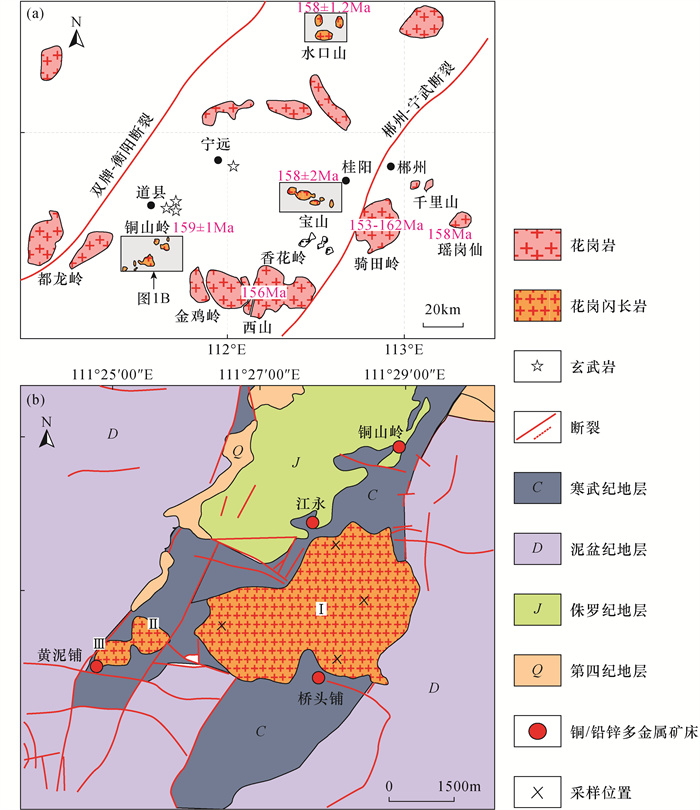
 下载:
下载:
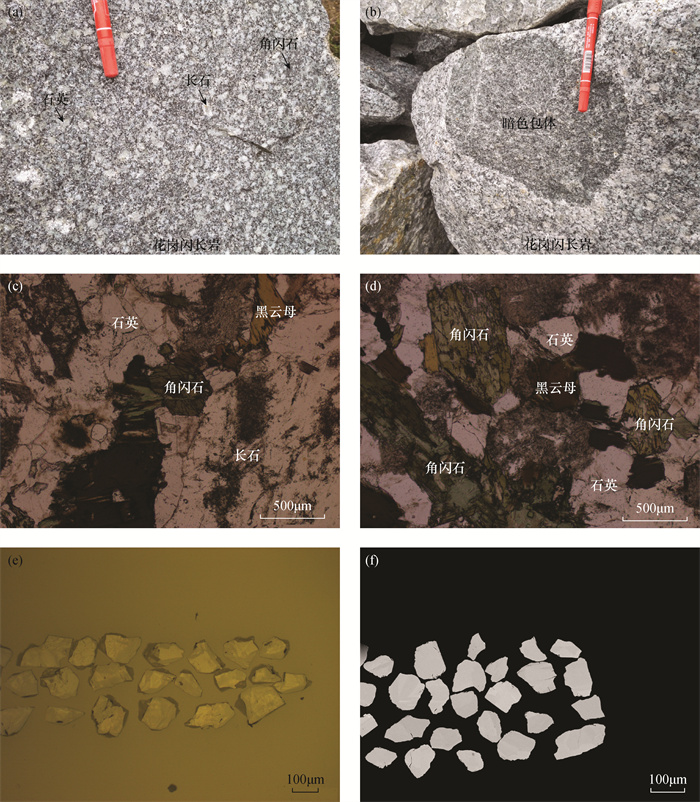
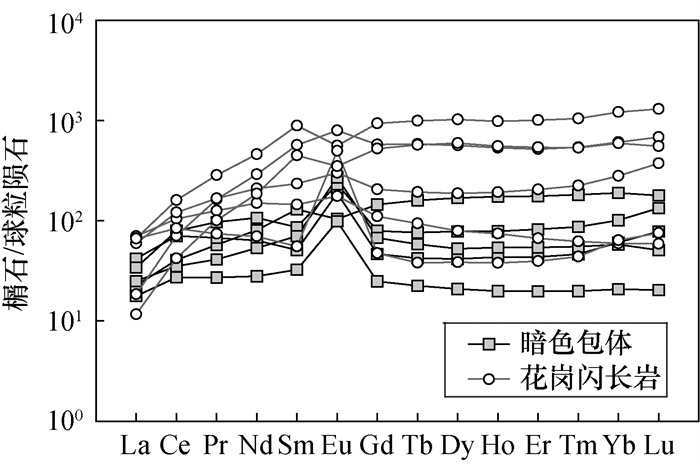
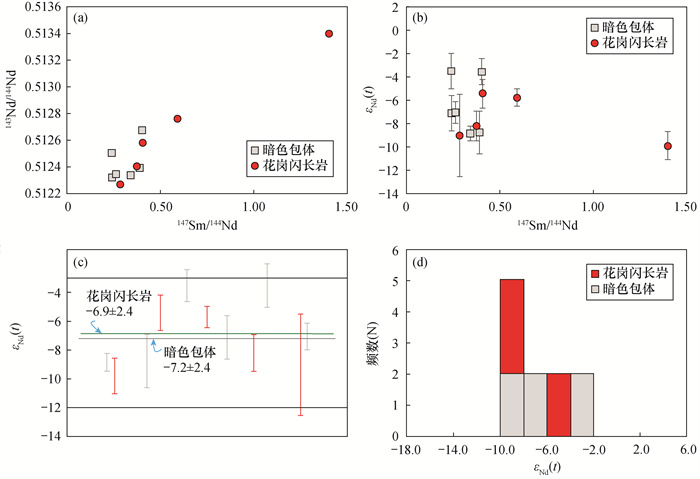
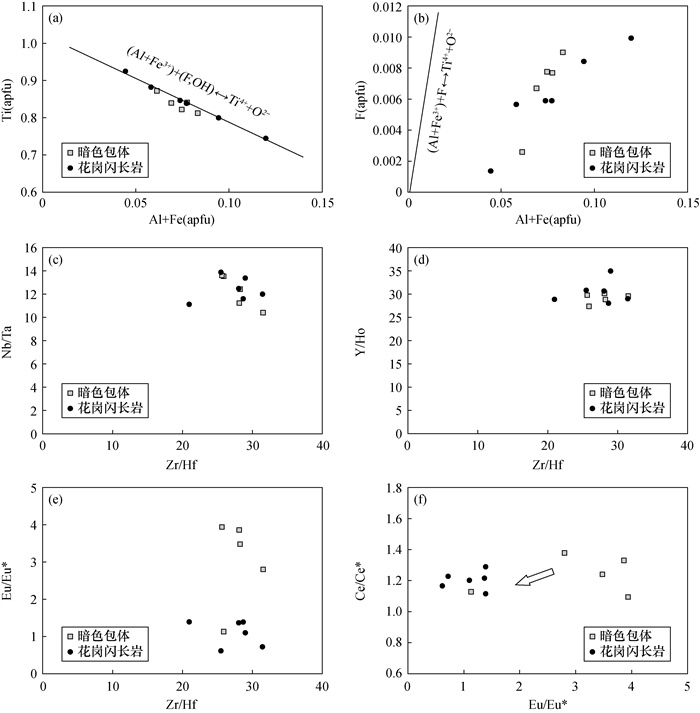
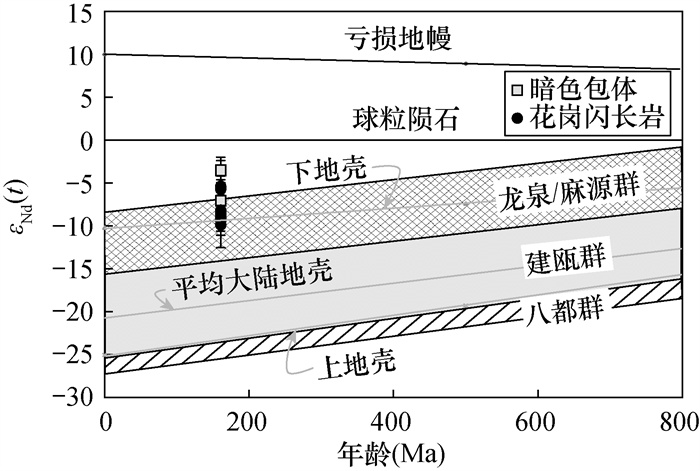

 京公网安备 11010202008159号
京公网安备 11010202008159号